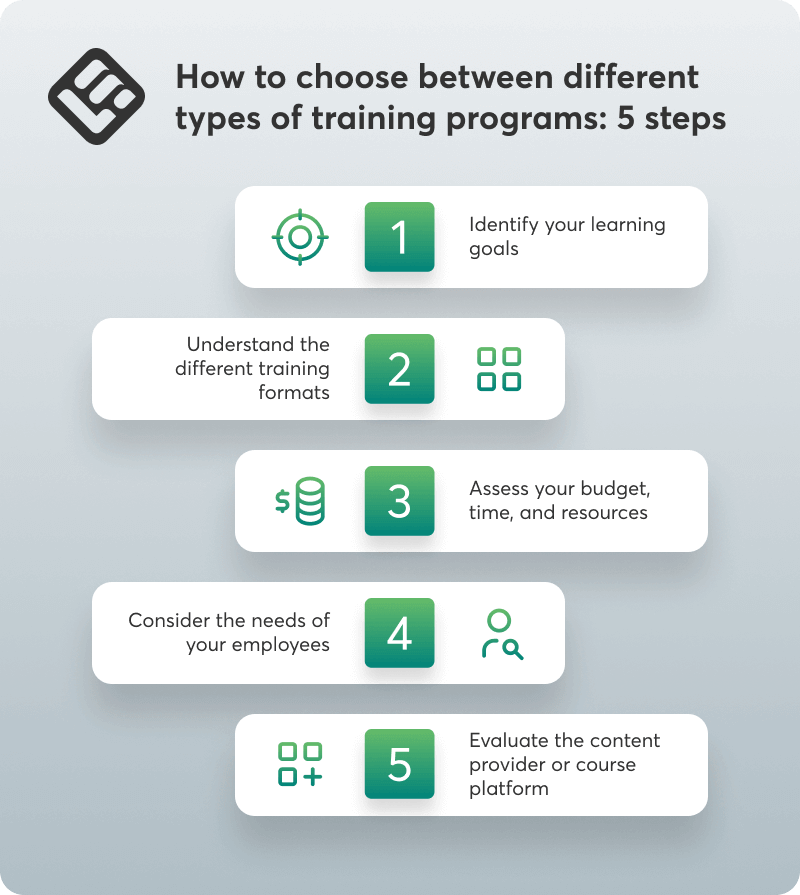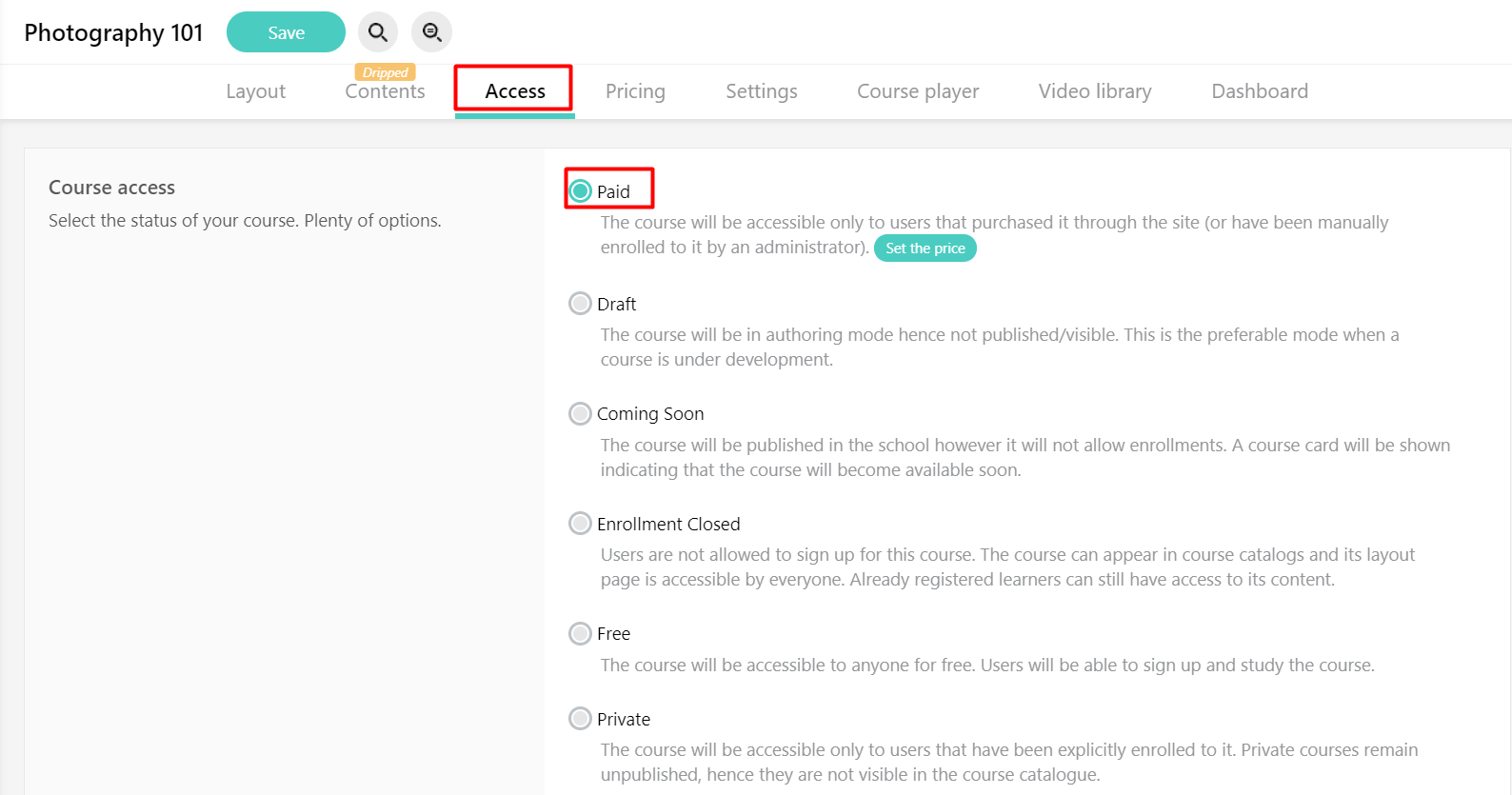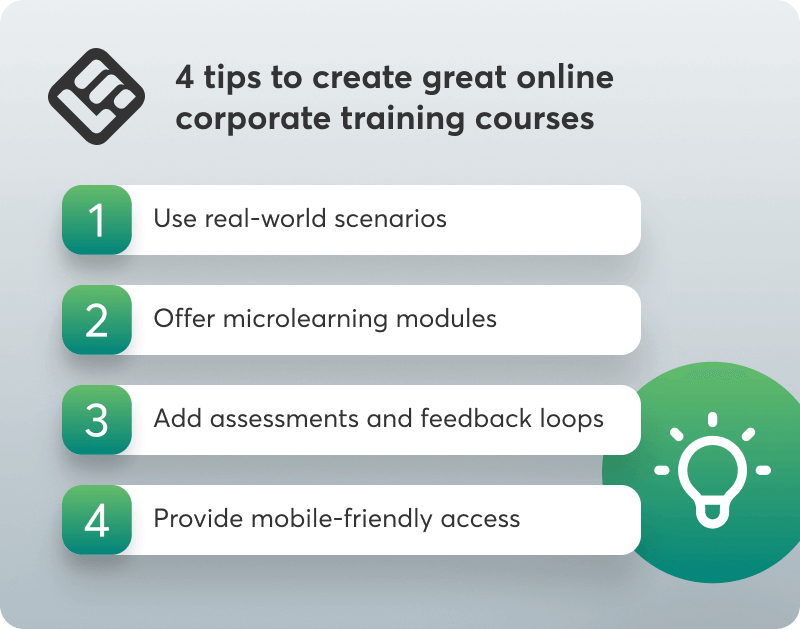Table of Contents
In today’s fast-paced business world, companies are looking to improve employee performance and well-being, onboard new employees, build their teams, develop their workforce, and upskill and equip employees with skills to improve their performance.
As a result, corporate training programs have become super popular to achieve these objectives. As an entrepreneur or business owner, selling these training programs to big companies can be a lucrative business opportunity. The best part is that corporate clients will pay a premium price, buy multiple seats, and pay upfront for the courses they buy.
In this guide, we’ll show you how to sell online training programs to big companies and give you the tools and knowledge to tap into this profitable market.
Whether you’re just starting out or looking to grow your business, this guide will help you connect with the right people, structure your offerings, and close the deal.
Why selling training to corporate clients is a good Idea
Selling corporate training programs can be very profitable for your business. Here’s why:
1. Big market
Industry forecasts say the corporate training market will grow at 8.90% CAGR over the forecast period and reach USD 493.32 billion by 2028. That’s a huge market to tap into.
2. Steady income
Corporate training programs have multiple participants and are long-term, so you get a steady income. Big companies have bigger budgets (and training needs) for learning and development programs, so they are more likely to invest in high-quality training courses.
3. Build lasting relationships
Working with corporate clients allows you to build long-lasting relationships, which can lead to repeat business and referrals. Providing high-quality and effective corporate training opportunities can make you a trusted advisor to your clients and position you as the go-to expert in your field.
4. Upsell opportunities
Selling to big companies can also provide opportunities to upsell additional services. For example, after providing an in-person workshop for a company’s sales team, you may be able to offer online corporate training courses, management training for leadership development, or leadership training and real-time coaching for top management.
5. Enhance your reputation
Selling training programs to big companies can add credibility to your business and help you enhance your reputation. You can leverage testimonials and case studies from satisfied clients to promote your business and attract more clients.
What corporate training opportunities are business clients interested in?
Here are just a few of the subject categories that companies like to invest in:
Organizations are more likely to invest in training programs to enhance performance, reduce risk, and boost retention rates. Understanding the most effective training types and their business applications can also help you develop programs that deliver measurable results.
Go through the table below to see a few examples of training programs you can build depending on your business goals.
When it comes to selling to corporations, you need to be and look professional. The look and feel of your website, landing pages, course modules, and your personal touch have to be top-notch.
LearnWorlds can help you create a professional online school to attract the right corporate customers.
How to choose between different types of training programs for companies
A lot of things depend on your decision to build the right training program. With options ranging from in-person workshops to fully digital academies, you will need to weigh factors like scale, content relevance, delivery mode, and learner preferences. The right decision leads to better performance, higher ROI, and a more engaged workforce.
Different training formats cater to different objectives as well. For example, leadership development might benefit from face-to-face coaching, while compliance training can be delivered efficiently via elearning.
The key lies in understanding what your company needs to achieve and matching that to the most suitable training method.

To make the right choice, here are the steps you need to take.
Step 1: Identify your learning goals
Before choosing a training type, it’s important to first consider your company’s specific needs, goals, and workforce dynamics. Clarify what you’re trying to achieve. Are you:
Your goals will dictate whether you need broad, foundational training or deep, specialized programs.
Step 2: Understand the training formats
There are several primary types of training programs. Becoming more familiar with those will help you choose the most appropriate format for your corporate training.
Best for: Hands-on training, leadership, team-building
✅ Personal interaction, real-time feedback
❌ Costly, harder to scale, less flexible
Best for: Compliance, software skills, scalable learning
✅ On-demand access, trackable progress, cost-effective
❌ Requires self-discipline, less interpersonal engagement
Best for: Long-term programs combining theory and practice
✅ Flexibility + live touchpoints
❌ Needs thoughtful integration of both formats
Best for: Quick skill refreshers, just-in-time learning
✅ High engagement, bite-sized, great for mobile
❌ May not cover complex topics in depth
Step 3: Assess your budget, time, and resources
In-person training can be more expensive, whereas elearning is cost-efficient at scale. Think about the long term and plan for the future. In the same way, think about the time needed to train your learners. If that’s limited, prefer asynchronous online learning over instructor-led.
Last but not least, choose a platform or tool that can support digital training and one that can grow with your business.
Step 4: Consider the needs of your employees
Different teams have different needs. For example:
Take the time to browse their needs first and ask them how they prefer to learn. Part of setting up for success is making sure your learners will succeed, too.
Step 5: Evaluate the content provider or platform
Look for a provider that offers:
Are you buying off-the-shelf content or creating it yourself from scratch using a course platform? Such considerations will determine your options and offer you the reasoning behind your platform selection.
What if I already have online corporate training courses?
No matter what online corporate training courses you have already created, they may fit and be suitable for a company. Honestly, if you sell it the right way, you can customize the subject and content in a way that a corporation will be interested in offering it to their employees.
All you need is a company with a budget to spend on its employees, the right person, and a good sales pitch. Remember, companies need anything that will:
You can also add more content to suit the company better and customize the course content to provide an optimized learning experience for the company’s learners.
If you are teaching marketing tactics, for example, you might want to add a few industry-specific points on the company’s products or services that will add value to the company’s marketing methodology.
So, your course is suitable for corporate training as long as it can be seen as a value to the company or the employees. Make sure you answer the following questions about your business training program:
Pre-sell a staff training program to corporate clients
Pre-selling a staff training program before you create it can be a powerful way to get clear on what to include in your course. Follow these three steps below:
1. Identify your audience
First things first. Start by identifying your audience and determining who your course is for and what problems it solves.
If you already have a customer base -no matter its size- you can arrange meetings with these corporate clients and have them tell you what they want. Ask for their input on what they would like to see offered by corporate training providers.
This is an effective and data-driven approach to seeing what your audience is actually interested in. Plus, it’s a great way to show your existing clients that you value them and that you want to offer them company training that is important to them.
If reaching out to your customers in real-time and on-site is not feasible, you can alternatively create an online survey to get their feedback.
2. Create a content plan and sales pitch
You can then either create a webinar or mini-course, that provides value to potential customers and showcases your expertise, or create a content structure only and pre-sell the seats.
At the same time, you can also create a landing page for your online course explaining the benefits of your course and include a call-to-action for interested customers to sign up.
3. Offer presale seats
Once you have generated interest, offer presale seats for your course. Customers pay upfront for access to the course at a discounted rate, while you can use the revenue to fund the creation of your corporate training services.
By following these steps, you can validate demand, generate revenue, and create an online course that meets the needs of your target audience.
How to sell corporate training programs to companies
Το start selling corporate training programs, you need to understand the market, target your audience, and have a plan.
How will customers find you and trust you? You’ll need to build social proof first.
To gain the trust of bigger clients, you’ll also need to build your personal branding. Industry events, seminars, and workshops can help you create a good reputation. Here’s what to consider.
If you already have an established reputation
Use your past experience to your advantage. If you have previous experience as a trainer, highlight that experience to potential clients. This will help you establish your credibility and make it easier to get hired as an independent trainer.
Leverage your existing network. If you have a network of contacts in your industry, make the best of these connections. Reach out to former colleagues, clients, or mentors and let them know that you are now offering training services on [X topic].
If you are just starting out
Start small and think big. If you are just starting out as a trainer, don’t worry. Begin by reaching out to smaller companies and gathering customer case studies and testimonials. This will help you establish a track record and build up your portfolio.
When you do start approaching larger companies, focus on the value you can add. Highlight your unique selling points and show them how your company training can benefit their organization.
If you have data to back up your claims, use it to your advantage. Show potential clients the results you have achieved in the past and the potential outcomes they can expect from working with you.
Use social media
Find social media groups and communities your potential customers are visiting and get involved, thereby contributing to discussions and starting interesting new talks.
LinkedIn is the best way to reach corporate decision-makers. But never underestimate the power of Facebook groups or X conversations, as they may start with a more casual conversation and end up with a sale.
💡Read also: How to sell your online courses on Facebook & Instagram
Establish yourself as a thought leader
One way to establish yourself as an authority is by writing books and thought leadership articles. How? Simply share your expertise and insights with your audience.
Leverage credible websites for this. Publishing articles on credible websites can help you reach a bigger audience and establish your credibility. Look for websites that are popular in your industry and see if they accept guest posts or article submissions.
As you work towards this goal and gain a following, more opportunities will start to open up for your employee training services. Companies will more likely reach out to you for speaking gigs, consulting work, or other opportunities to grow your business.
How can you find companies𑁋potential customers to sell your corporate training services?
First, create a list of corporate companies that may be interested in your corporate training services. Look for companies in your industry or niche that could benefit from the skills and expertise you have to offer.
Once you have your list of potential customers, you need to find the decision-makers within those companies. This could be HR professionals, managers, learning officers, salespeople or anyone else involved in the training and career development of employees. Then:
When reaching out to potential customers, showcase your past successes and achievements. Use testimonials from happy clients to demonstrate the real results you’ve achieved for other companies. This will bring more people your way.
You can use a cloud-based contact center software to manage customer interactions across multiple channels. Companies are busy, and your sales pitch might not be top of mind for them.
When you follow up with a phone call the next day (or an email a couple of days later), you can remind them about your training services and start a conversation about how you can help their employees feel appreciated and develop new skills and knowledge.
Remember, persistence is key when selling training programs for companies. Keep reaching out to potential customers, refining your pitch, and showcasing your successes to win new businesses and grow your client base.
💡Read also: Successful email sequences to boost your online course in 2025
Choose the right technology for corporate online training
To start selling your training for companies, you will also need a corporate learning management system or a white-labeled course platform.
Choosing the right one might come down to the individual needs of the training you want to provide. Depending on whether you are offering simple video courses, coaching, or certified CPE training, the requirements will change.
The best way to go into it is to make a list of your requirements and note the most important aspects of it. Don’t make a list of all essential aspects, but instead choose the top 3 or 5 things that are essential.
Some more things to consider when choosing a corporate online training platform:
💡Read also: 7 top affordable LMS solutions to enhance your training programs
Selling seats to company training & mass enrollment
Companies will be buying your corporate online training course in bulk for their employees.
You will be selling “seats” or “licenses” instead of a single course. This can skyrocket your sales, as those can range from a single digit to hundreds or thousands of premium pricing courses. In this case, here are some aspects to consider:
Wire transfer / Bank payments
Due to the high cost, many companies will want an invoice for your services. For this, you can use a Word Invoice Template to create custom invoices. On the other hand, some may expect payments through Wire/Bank transfers. When you are pitching your course to a company, be prepared for a longer payment process.
💡 Explore LearnWorlds’ end-to-end and hassle-free checkout and payment options
For example, expect that there will be some paperwork involved, such as a contract, an invoice, and multiple communications. The process might take a bit more, but the return on investment is much higher.
Selling pre-packaged training seats
If the cost is 3 or 4 figures only, then the company might also want to pay digitally with a card payment. This is where you might need to set up a specific checkout for the seats.
Setting up pre-determined seat packages will make it easier to manage payments for your company training programs. You can create an empty course just to handle the payment, with the price you would ask for specific intervals, e.g., 10 seats, 25 seats, 50 seats, 100 seats.
Let’s take the example of selling a certificate program “Communication Skills Course” to a sales organization. The normal price would be $100, but selling it to corporations for multiple seats might come at a discounted price for bigger orders:
The person responsible for the company would buy the course, which comes with instructions on how to give access to their employees after they buy it.
There are two ways you can give access to their employees, depending on the control or the flexibility your customer wants.
Accessing the course
When a company buys in bulk, they either have a group of employees they want to take the training (eg sales professionals) or they wish to offer it as a rewarding perk to high-performing employees to enhance their professional development.
Importing a group of employees
In the first case, the company already knows to whom they want to give access. In this case, you will need a spreadsheet file with the names and emails of the employees to manually enroll them in the course.
You can also mass-import users to create an account. LearnWorlds will send them an email with their new account and further information on how to log in.
Access codes
Sometimes, the company might want to buy licenses to share with its employees. It can be a wellness or family course they wish to offer as a gift to their employees. For this course, the company may even want to keep some licenses handy for future use.
In both cases, it’s a much better idea to use coupon codes as access codes. You can create a discount coupon for 100% of the price of the course; this way, a user can create an account by themselves and use the code at checkout to get access.

Custom online checkout
If you don’t want to offer pre-determined packages (e.g., because you have made an agreement with your customers that they will pay online), then you can create a private course with a link to the checkout.
Let’s say you have agreed to 100 seats for $5000 with Bob’s Local Supermarkets, and they want to pay with the company’s credit card.
You can create a paid course for $5000 and then change the “access” to Private. The course will keep the original price, but will not be accessible to anyone without a direct link to it.

Also, you can send this course to your contacts, and they can use the private course to pay the amount owed. After that, you can choose whether you want to send access codes or manually enroll the users in the course.
Premium private courses
On the subject of private courses, a corporate customer might require a customized corporate training and development course. You might be adding content, branding the existing content or login pages, or offering a different experience altogether.
This is the purpose of having a private group for specific audiences. A ‘private’ or ’unlisted’ course is created for a dedicated group of people whose learning needs are industry-specific, measurable, and different from those of the majority of your students.
The creation of a private course serves a unique purpose — that is, to educate a group of students who need to build and develop the knowledge, abilities, and skills that are required to carry out an industry-specific activity or task in the work environment.
These courses stay ‘hidden’ from and are ‘not listed’ on your course catalog, which means they are only accessible to a selected group of people whom you choose to include.

A private course makes it easier to manage specific groups, their reporting, usage, and particular needs.
Use reports from the company training program for your own benefit
When you are selling training, proving and continuously improving the business case is paramount. The best way to show your business case is to demonstrate value.
And you can achieve that with LMS reporting. LMS reporting includes progress and completion data that is sortable by individual, group, organization, or any other demographic metrics. See those reports and figure out how you can use them to show your customers your training is helping their business.
By showing interest in the effects of your training, you’re moving from vendor to advisor, and that may result in opportunities to sell more corporate training programs in the future.
Mistakes to avoid when selling company training programs
If you are planning to sell training programs to companies, you will need more than just great content. You will need to align solutions with business needs, show clear ROI, and build trust. While it can be difficult to communicate the value you offer to organizations, it is not impossible.
What can you do about it? Prep yourself to avoid common mistakes that can affect your conversion rates and reputation in the B2B training space.
Not aligning with business objectives
To avoid this, get on a discovery call with a business rep. Ask what you need to understand the company’s strategic goals, pain points, and compliance requirements. Then position your training as a pathway to helping the business meet its KPIs.
Not demonstrating measurable ROI
Start showing numbers. These can include data on completion rates, post-training performance improvements, and reduced onboarding time. Offer detailed dashboards that can help L&D or HR managers justify the investment.
Overcomplicating the buying process
The simpler the offer, the better. Simplify the B2B buying journey with clear pricing, scalable plans, and easy purchasing options. Also, make sure to provide demos, trials, or pilot programs to make the initial commitment simpler.
Ignoring post-sale support
Companies value long-term partners, so staying present is key. Offer onboarding support, dedicated account managers, and implementation resources to reduce friction and encourage retention.
Examples of successful courses in the corporate training market
The corporate training landscape includes high-impact courses that address performance improvement, compliance, and leadership development. What sets them apart is how they tackle specific industry challenges, use engaging formats, and offer tangible business value.
Here are standout examples of corporate training success:
LinkedIn Learning: Leadership and management pathways
Companies like Microsoft and GE have adopted LinkedIn Learning courses to train their management in modern leadership principles, people skills, and decision-making.
Coursera for Business: Google IT Support Professional Certificate
Used by global organizations to upskill internal IT teams and support digital transformation, this IT course suite offers a job-ready credential recognized by industry leaders.
Dale Carnegie: Sales & negotiation
Dale Carnegie’s online courses and in-person help companies build high-performing sales teams by blending timeless principles with live coaching.
LearnWorlds-powered programs: Customized compliance and onboarding
Many training providers use LearnWorlds to deliver industry-specific courses with interactive features, quizzes, and certifications that scale across large teams.
💡Find out how LearnWorlds can help your business succeed.
The best tips for creating great online corporate training courses
Creating an effective corporate training course means balancing learning design with business value. Your course should engage learners, deploy easily for L&D teams, and provide measurable outcomes.

Here are the top tips to make your corporate training stand out.
Simulations, case studies, and role-playing improve retention and ensure that learners can apply knowledge directly in their jobs.
Break content into short, digestible lessons that fit into a busy employee’s schedule. This approach increases engagement and reduces dropout rates.
Regular quizzes, practical assignments, and learner feedback surveys help you refine your course and prove its effectiveness.
With hybrid and remote work becoming the norm, ensure your training content is accessible on any device, at any time.
LearnWorlds: The best software for corporate training providers
If you’re planning to sell or manage corporate training programs, you know your learning management system should do more than host videos. LearnWorlds is built for professional training providers who serve businesses at scale.
With analytics, course authoring tools, customizable certificates, and integrations with HR and CRM systems, LearnWorlds helps you deliver training programs that clients value.
Whether you’re building onboarding journeys, compliance training, or upskilling courses, our platform makes it easy to scale your offering, track performance, and provide white-labeled experiences that reflect your brand.
Rosemary is LearnWorlds’ Content Marketing Manager. She has over 2 decades of experience in omnichannel marketing and content writing for the IT and SaaS industry. Her expertise lies in crafting effective content marketing strategies that attract, engage, and nurture customers, enabling LearnWorlds to reach its target audiences with precision.
Kyriaki is the SEO Content Manager at LearnWorlds, where she writes and edits content about marketing and e-learning, helping course creators build, market, and sell successful online courses. With a degree in Career Guidance and a solid background in education management and career development, she combines strategic insight with a passion for lifelong learning. Outside of work, she enjoys expressing her creativity through music.






